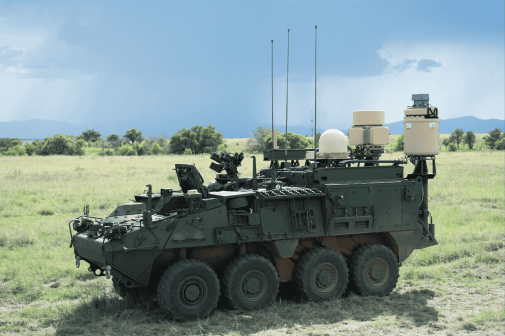US needs to harness software to be more adaptable in electromagnetic warfare

Driven by the high paced software nature of modern systems, the U.S. needs to be more agile, adaptable and redundant in electromagnetic warfare to keep pace with sophisticated adversaries, officials maintain.
Modern software systems turn the old Cold War paradigm — where signals were collected, brought back to laboratories for analysis and countermeasures devised — on its head.
“I think the name of the game is when we’re looking at electromagnetic warfare capability in the future, it needs to be software driven, artificial intelligence, machine learning, so that we have the ability to respond in a very fast, quick, in a lethal and resilient manner,” Brig. Gen. Tad Clark, director of electromagnetic spectrum superiority for the Air Force, said Wednesday during the C4ISRNET Conference. “Those types of emerging technologies are the things that we’ve identified that we’d like to focus in on.”
One example the U.S. military has been looking at is how SpaceX’s Starlink satellite constellation that provides internet coverage is being used in Ukraine.
Despite Russian attempts to jam it, the following day, Starlink reported adding new lines of code that rendered the jamming ineffective, Dave Tremper, director of electromagnetic warfare within the undersecretary of defense for acquisition and sustainment’s platforms and weapons portfolio management office, said at the conference.
“From that EW technologist perspective, that is fantastic and that paradigm and how they did that is eye watering,” Tremper said. “When we compare that to the kind of the latency of our ability to get capability out there, how long it takes us to make capability upgrades, the process we have to go through to do the analysis of what happened, what’s the appropriate way to fix it, how do we then acquire the system, how do we get the contract in place — we’re talking about a significant timeline to make those types of corrections.”
In the way Starlink upgraded its systems in the face of a threat, the military needs to have that same agility to change its electromagnetic posture without losing capability, he said, stressing the importance of electromagnetic spectrum survivability in all systems.
To some degree, Pentagon officials have described a change in mindset that’s needed to think about this paradigm shift.
The Air Force’s top officer, Gen. Charles “CQ” Brown Jr., has previously said that electronic assets can be cost effective given their repeatable processes.
“I really believe now as we go more and more of a force that is in a world that is more software defined, there is the capability capacity to move much faster in these areas,” he told reporters in March. “From my experience, it would take us some time — if we saw a new threat — to modify all of our systems. With software now we can do this much faster.”
Clark pointed to the Air Force’s Compass Call as an example of a software platform, not an aircraft per se.
“What people think of Compass Call, with that airborne electromagnetic attack platform, they often think of the physical platform that capability is posted on, the C-130,” he said. “As we look to the future, we’re looking to put that on an aircraft that can fly higher and faster. In fact, it’s being built right now, the EC-37 Bravo. But more important there are capabilities on that platform that are all software driven.”
In the last year, the Air Force has also created the 350th Spectrum Warfare Wing, designed to enable, equip and optimize the fielding of electromagnetic spectrum capabilities. Clark said the organization also seeks to assess waveforms, ensure systems can identify waveforms correctly, and are looking down the road at advanced capabilities such as cognitive electromagnetic warfare to respond to unknown waveforms in a timely manner.
The Army, for its part, has also begun to experiment with reprogramming capabilities at the edge. Dubbed Starblazor, the project sought to figure out how to understand and reprogram against signals of interest at the tactical edge once discovered.
More broadly, the U.S. is also taking lessons from Russian use of electromagnetic spectrum operations in Ukraine as it ponders what investments need to be made.
“We’re learning a lot about what Russia has been investing their money in, the sophistication of their equipment, the reliability of their equipment and their soldiers and military members, personnel with their ability to execute that mission in a synchronized fashion,” Clark said. “I think it gives us some insight of where certain countries are, where we are, where we need to be, where we want to be. And that’s certainly very helpful.”






